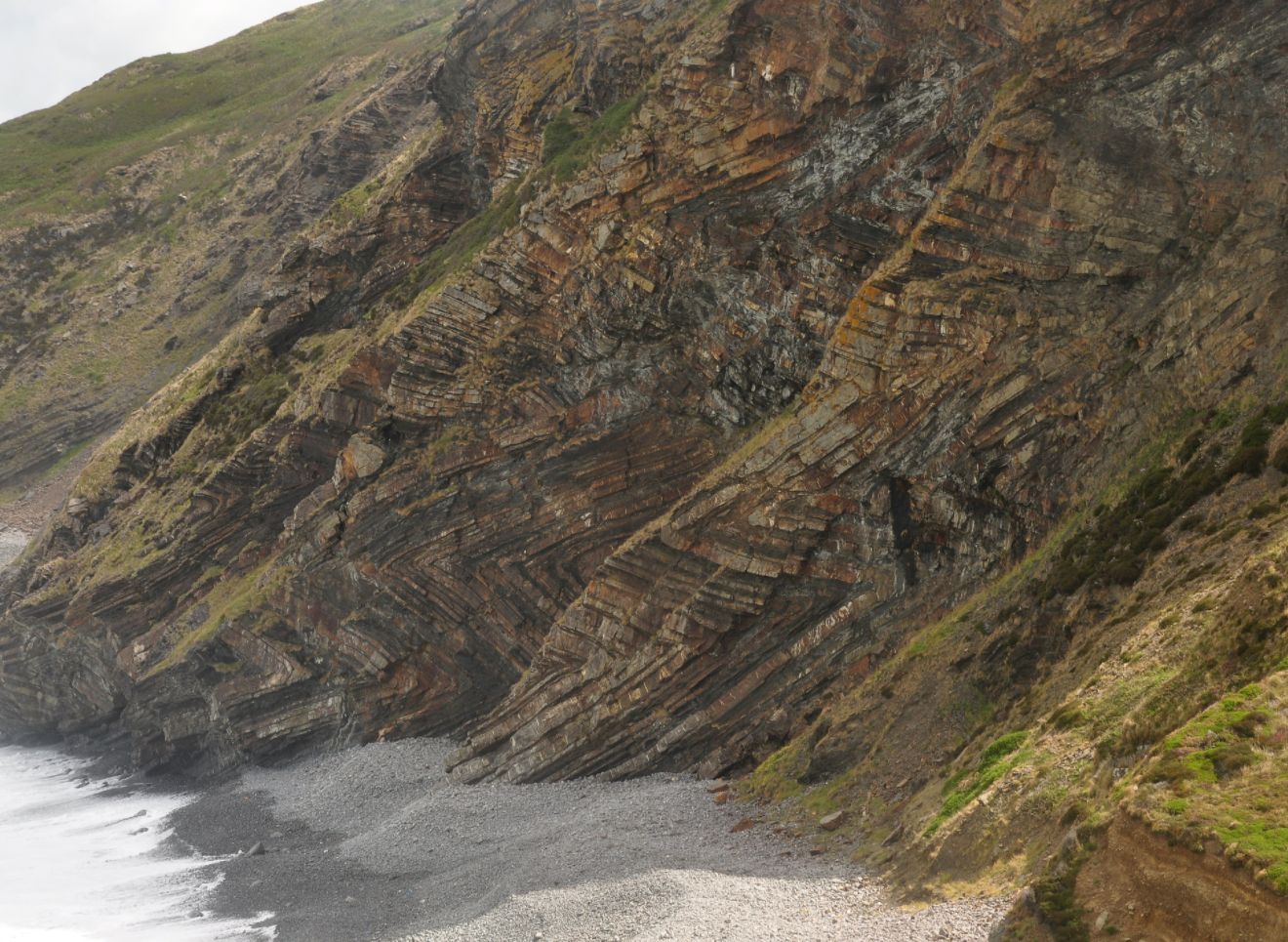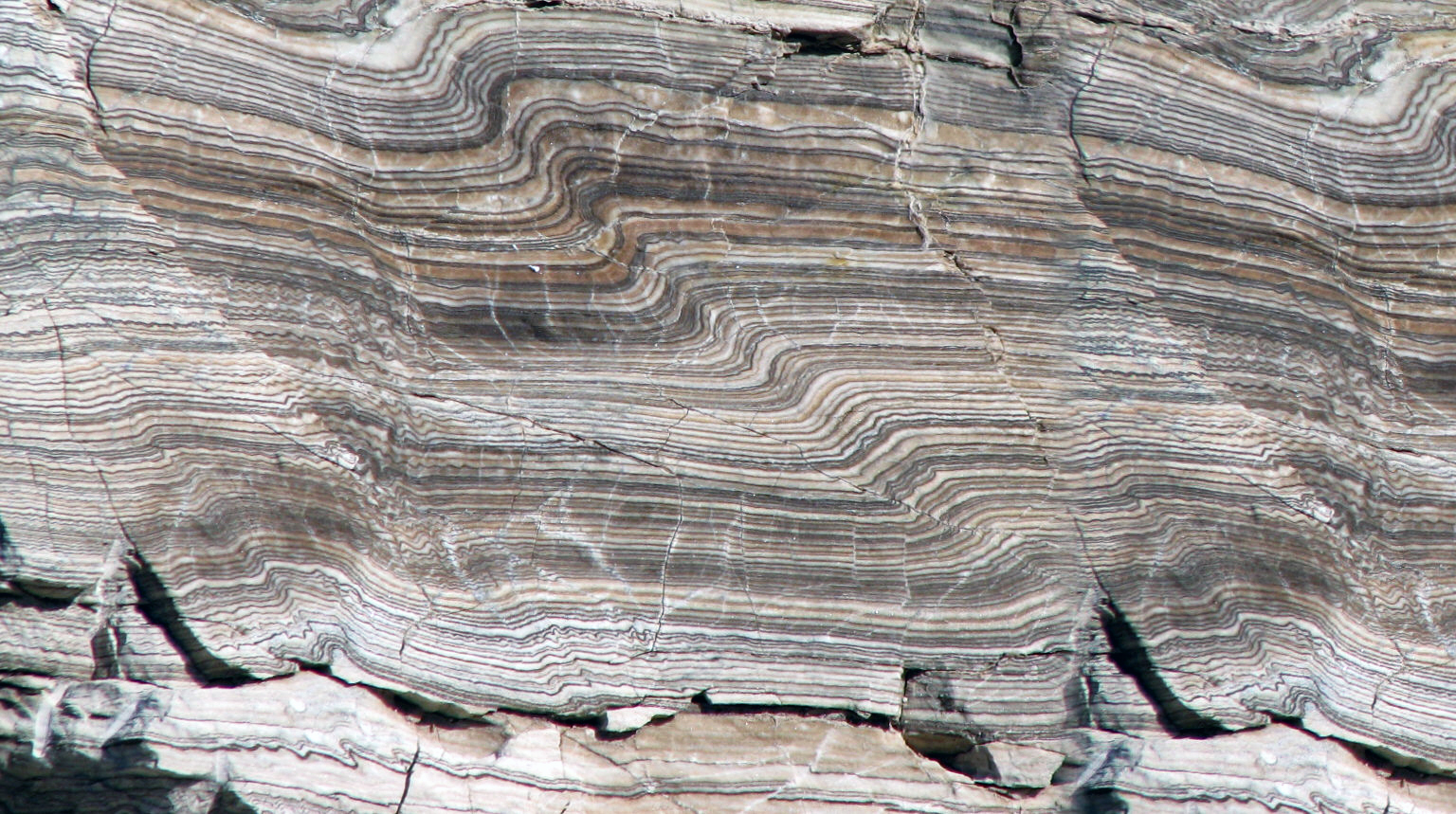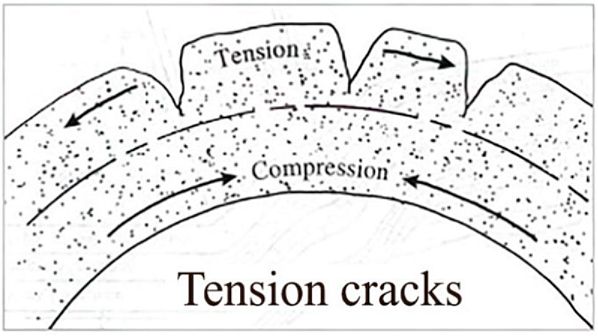Fantastic folds
Curvy rock layers undermine millions of years

Have you ever walked along the beach and looked up to admire folded strata (rock layers) in cliffs? There are plenty of examples of folding in rocks along the south coast of England. Most examples involve multiple layers of rock, bent together. How did they get like that, and what were the forces needed to bend the rocks in such dramatic ways?
More importantly, how long did these processes take? The information about geology on the Internet and TV constantly reinforces the idea of a vast age of the earth. The belief being upheld is that forces and rates of processes we see around us haven’t changed much in millions of years. ‘Slow and gradual’ is the constant mantra, and what we see in the present is supposedly the key to understanding the past. This idea, proposed by Scottish geologist James Hutton (1726–1797), is called ‘uniformitarianism’. Hutton, who is fêted as ‘the Founder of Modern Geology’, proclaimed (emphasis added):
…the past history of our globe must be explained by what can be seen to be happening now … No powers are to be employed that are not natural to the globe, no action to be admitted except those of which we know the principle.1
Hutton was a deist, meaning he believed in a creator, but not the God of the Bible. And he denied biblical history—specifically a supernatural, recent creation, followed by a global Flood some 1,700 years later. Because of his deism, he ruled out interpreting things like folded strata in terms of Noah’s Flood. So even before examining the geological evidence, Hutton, and those who followed him, dismissed the Flood as the means of explaining the facts of geology.2 But, as we shall see, the Flood is the best explanation for such things as folded strata.
Stressed strata

Rocks are a lot like people—they can get stressed! And like people, rocks react to stress in different ways. Stress is the force acting on the rock, which can be applied in different directions. There is ‘tensional stress’, which pulls rock apart. ‘Compressional stress’ causes rock to be squeezed together. ‘Shear stress’ comes from two forces in opposite directions but offset from each other (see figure 1).
Some people can cope with stress better than others, and rocks are like that also. Change in rock shape due to stress is called strain, which leads to three types of deformation (change in shape).
There is elastic deformation, where a rock can ‘bounce back’ after stress is released. Ductile deformation means the rock changes shape under stress, and will not return to its original shape.
Finally, if rocks are stressed hard enough, they will fracture, thus irreversibly changing them—termed brittle deformation. These different rock behaviours also depend upon their constituents—like a cake mix with its soft, malleable ingredients (like eggs, fruit, flour) and hard, brittle ingredients (like nuts). And like cake baking, temperature also greatly affects how rocks behave. These three different factors (stress types, constituents, and temperature) and their resultant outcomes are typically employed by geologists to explain what they see in rocks.
This includes the folding of sedimentary strata. Long-age geologists imagine that stress (with or without heating) acting on confined rock, applied gradually and for long enough (typically millions of years), can cause brittle rock to deform like plastic, and folds in rocks are explained in these terms.
Factor in the Flood!
But should folded sedimentary rock strata be explained in this way? Does folding really require millions of years? When we factor in the global Flood, the time required for these structures to form collapses. The Flood offers a simple explanatory mechanism, not requiring millions of years—a timespan which the Bible’s history rejects. Quickly deposited wet sediments were laid down around the world in vast layers during the Flood. And if strata were still soft and pliable, rather like layers of clay, they could have been quickly folded by earth movements, rather than slowly bent into shape, without breaking or crumbling.3




The Bible indicates that the Flood, which lasted just over a year, was a global tectonic event, with much vertical and horizontal earth movement. This provided the forces required to mould sediments and fold rocks.4 Genesis 7:11 tells us how the Flood started, when “all the fountains of the great deep burst forth.” Genesis 8:1–3 tells us how the Flood ended: “And God made a wind blow over the earth, and the waters subsided. The fountains of the deep … were closed … and the waters receded from the earth continually.” These verses are also describing vast global geological activity. Furthermore, Psalm 104:6–9 clearly describes Noah’s Flood:5 “The waters stood above the mountains. At your rebuke they fled … The mountains rose, the valleys sank down to the place that you appointed for them … so that they might not again cover the earth.” Evidently, huge earth-moving forces were involved that transported vast amounts of freshly deposited, wet sediments. The Flood provides all the factors necessary to fold strata quickly.6
Deep-time dilemmas
Geologists who believe in millions of years will not invoke Noah’s Flood to account for layering and folding of rocks. They think these rocks were deposited slowly. As the sediment layering became very thick (kilometres) the lower strata would have been compressed by the weight of overlying ones, thus squeezing out the water. In addition to chemical cementing action, this would have ensured that the sediment hardened into rock.
Deeply buried rock is confined by pressure and so they say it is possible for it to have been folded slowly, when solid. The problem for this idea is that solid rock will behave in a brittle fashion; if subjected to pressure, it will not fold, but snap. (Bend an old dry twig, and it will snap—suddenly!)
A fold has two components of stress operating at the same time: compression and tension. In the outermost half of the fold, tensional forces are in play, and on the innermost half, compressional forces are at work (see figure 2).
We would therefore expect to see brittle fracturing on the outermost half and evidence of compression on the innermost half. However, researchers have not observed this in folds in the Grand Canyon, for example.
The rock appears as though it has deformed like wet clay. It becomes thinner where the fold has been in tension (not showing tensional fractures), and thicker where it has been in compression (but not showing signs of being crushed). This is powerful evidence that the sediment was still wet and plastic, like clay, and not solid rock, when it was bent.4


Long-agers can accept that an individual rock layer could have been wet and plastic when folded. But not when there are multiple layers clearly bent together, with the top and bottom layers supposedly separated by millions of years. This is because they know it would be unreasonable to think that rock layers would stay soft for millions of years. So, at least the bottom layer of any such folded sequence would have had to be solid when bent.
In the Grand Canyon, where the folded strata are part of a larger formation called the Kaibab Upwarp (figure 3), the deepest layer (the Tapeats Sandstone) is supposed to be 550 million years old. The topmost of the folded layers (the Kaibab Limestone) was allegedly deposited 300 million years later. (The bottom layer is supposedly millions of years older than any of the intervening layers.) So, since they were all folded together in plastic fashion, the straightforward understanding of the evidence is that they were all still wet and pliable when folded.

Long-agers must therefore find some way around this. To preserve long ages, rocks must be seen as able to bend without breaking—in the unobservable past, over huge time periods.3
Conclusion
The supposed millions of years to bend rock strata into folds is an illusion. Folded strata do not constitute evidence for vast amounts of time in the rocks.7 Furthermore, no one has waited for eons to watch if it really takes that long to form folds in strata. ‘Deep time’ is a philosophical idea (derived from uniformitarianism), not a scientific observation.
To the contrary, multiple layers of strata folded together are a problem for long-agers; one that needs to be explained away. The evidence strongly suggests that such sediments were all laid down quickly and together. They were folded while still wet, before hardening into solid rock.8 The history in the Bible is therefore vindicated when we realize the Flood is the best explanation for these fantastic folds .
After the magazine version of this article had gone to press, Andrew Snelling of Answers in Genesis, published some very important work he had done on the petrology of certain rocks in Grand Canyon (Bright angel Formation, Tonto Group).1 Part of his investigations demonstrated, through careful thin-section microscopic measurements and photography, that grains within the strata of tight folds are not affected by metamorphism in any way. Neither are the rocks themselves metamorphosed.
Such evidence strongly debunks the idea that these were already-lithified rocks which were folded slowly (behaving plastically) under heat and pressure. Furthermore, a host of other internal evidences—chemical, fossil, and structural—that Snelling investigated demonstrate beyond doubt that the rocks in these Grand Canyon strata must have been laid down quickly and folded, while still soft; i.e., before they had hardened to stone.
References and notes
- Snelling, A., The Petrology of the Bright Angel Formation, Tonto Group, Grand Canyon, Arizona, Answers Research J. 14:303–415, 2021; answersresearchjournal.org/petrology-bright-angel-tonto-group.
References and notes
- Allen, D. Warped earth, Creation 25(1):40–43, 2002. Return to text.
- Catchpoole, D and Walker T., Charles Lyell’s hidden agenda—to free science “from Moses” 19 Aug 2009. Return to text.
- Not all folded rocks can be explained in terms of folding of sediment while wet. Metamorphic rocks are rocks that were changed by heat and pressure, conditions which can also deform them. Return to text.
- Morris, J., The Young Earth, Master Books, China, pp. 107–112, 2014. Return to text.
- Barrick, W., Oard M.J., Price, P., Psalm 104:6–9 likely refers to Noah’s Flood, J. Creation 34(1):102–109, 2020. Return to text.
- Nelson, V., Flood fossils, Untold Secrets of Planet Earth, pp. 80–83, 2014. Return to text.
- Walker, T. Grand Canyon strata show geologic time is imaginary, Creation 25(1):41, 2002. Return to text.
- Hutton, J., ‘Theory of the Earth’, a paper (with the same title as his 1795 book) published in Transactions of the Royal Society of Edinburgh, 1785. Return to text.






Readers’ comments
Comments are automatically closed 14 days after publication.